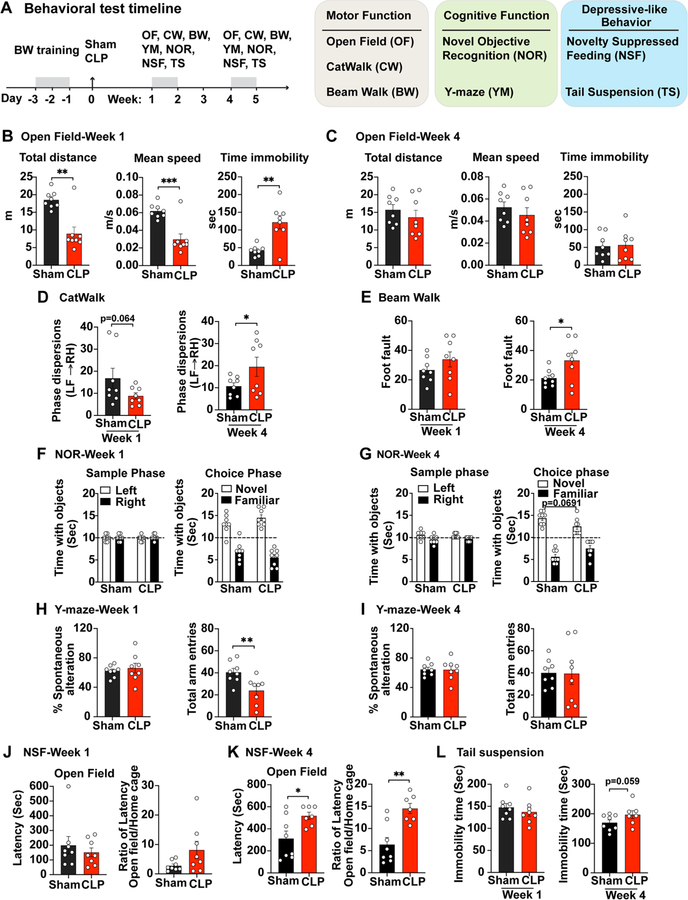Fig. 2.
Sepsis induces functional impairment of the brain. (A) A schematic diagram of behavioral test timeline. Mice went through beam walk (BW) training for 2 consecutive days before they were subjected to sham or CLP procedure. A battery of behavioral tests to assess motor function, cognitive function, as well as feeding and stress behavior were performed at week 1 and 4 post-surgery. (B-C) Spontaneous locomotor activity was determined by Open Filed (OF). n = 8/group, **p < 0.01, unpaired t test. (D) Gait analysis was evaluated by CatWalk (CW). Phase dispersion measures the coordinated walking pattern. n = 8/group, *p < 0.05, unpaired t test. (E) Fine motor coordination and balance was tested by Beam Walk (BW). n = 8/group, *p < 0.05, unpaired t test. (F-G) Non-spatial retention memory was tested by Novel Objective Recognition (NOR). Sample phase presents training stage. n = 8/group, *p < 0.05, unpaired t test. (H-I) Hippocampus-dependent spatial working memory was evaluated by Y-maze. n = 8/group, **p < 0.01, unpaired t test. (J-L) Rodent feeding and stress behavioral performance was evaluated by Novelty Suppressed Feeding (NSF) and Tail suspension. n = 7–8/group, *p < 0.05, **p < 0.01, unpaired t test.

